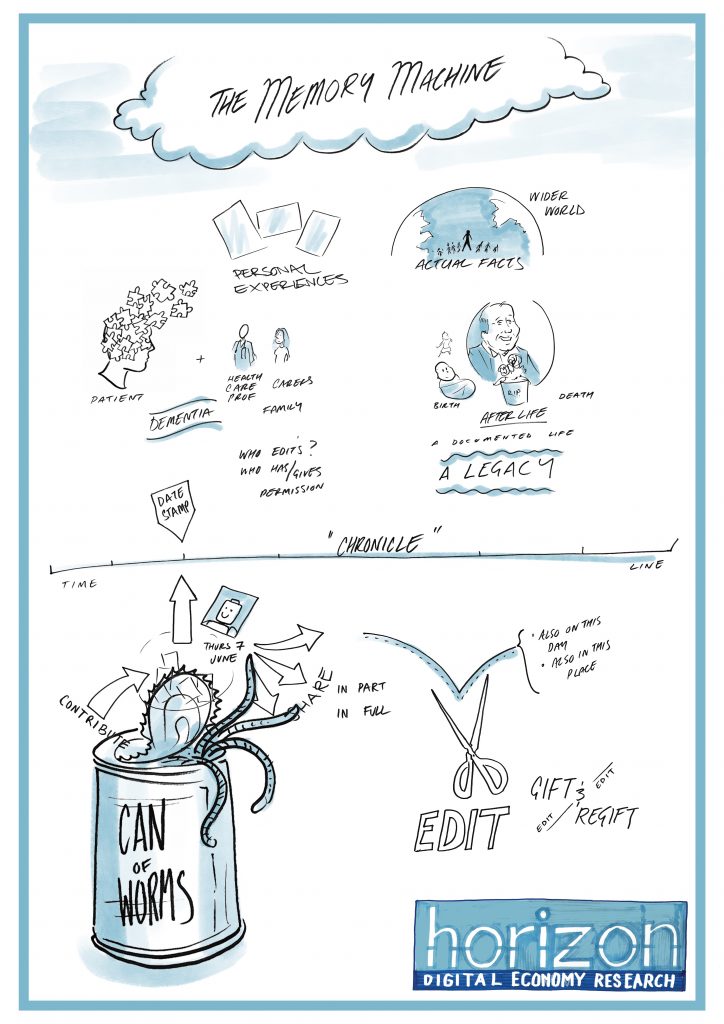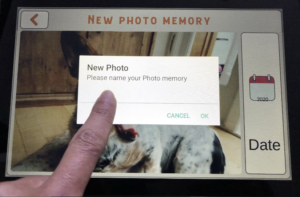
Memory Machine (MeMa) 3.0


The In My Seat project was part of the Horizon Services Campaign. The aim of the project was to look at public transport and seek a way, via a technology proof-of-concept, to improve the enjoyment of bus journeys. In this blog we summarise the work undertaken in the project so far, and outline the next steps.
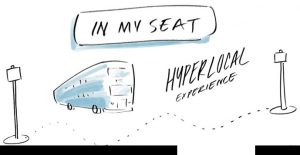
Workshop 1 – Users
We invited members of the public to a 1 hour workshop on the University campus. Participants were introduced to the aims of the In My Seat project, and the workshop aims:
Following some introductory questions about their usual habits when using public transport, they were split into 4 groups and asked to consider 4 types of content they might interact with – local information, social content, user-generated content and games and entertainment. In their groups they were asked to list examples of each type of content they would enjoy interacting with. They were also asked to consider the formats and incentives that an app providing these types of contents might include, and any other things that might be important. Finally, we asked them to ‘design an experience’ to be part of an app, to include one or more of the features from the task, and to consider what the experience would look like, how it would work and how they might get people to use it.
Based on insights from the workshop, we developed 4 proposals to take forward into the next stage:
Workshop 2 – Stakeholders
Following the first workshop, stakeholders including Council and University transport planners and passenger advocate groups, were invited to a 2 hour workshop. They were introduced to the project and the aims of the workshop:
We presented results of the first (ideation) workshop including the four ideas: (Bus Miles, Seat Bingo, Route Collector and Bus Butler) and invited Stakeholders to discuss their thoughts on these scenarios. We then asked participants to imagine they were a passenger, operator, local authority, or any other stakeholder, and to consider challenges and barriers to effective public transport use – motivators and drivers, and how the In My Seat project might help with any current practices or aims for each group.
Some of the key themes that emerged from the discussion were that people often wanted to be uninterrupted while travelling on public transport; personal safety when travelling; cross-modal and end-to-end coordination; and specific incentives for operators and passengers. As a result, we focused in on the ‘Bus Butler‘ concept for the next stages of the project.
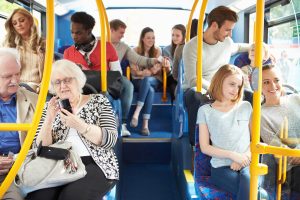
Workshop 3 – Lo-fi Prototyping with Users
We conducted a final workshop to aid the design of the look and functionality of the app. During the workshop participants were seated in pairs facing a screen – as if on a bus. They were first presented with the aims of the In My Seat project and the results of the previous workshops, followed by the aims of this workshop :
Participants were provided with an booklet – each page representing a potential screen of the app – plus some other pages for additional questions. We asked them to go through and think about what information they would want on that page, where they would go next, and what the page would look like. The pages they were provided with to think about, were to find a stop/live departures, journey updates/upcoming stops, ratings and comments, user-generated content, collection/checking-in screens, timelines/public and personal views, settings and notifications. In the second part of the workshop we asked them to think about timelines and switching between types of content, and what content they would share with the public, or collect for themselves. For the final part of the workshop, they were shown a point-of-view recording of a typical journey to elicit any further responses.
App Development and Deployment
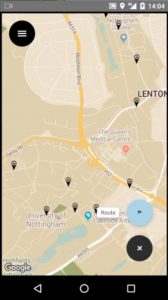
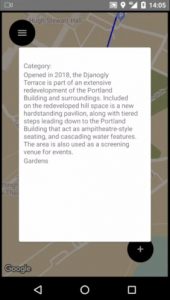
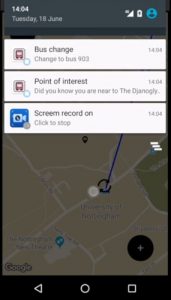
The outcomes from our workshops enabled us to design and build a mobile application to deploy and test. The application focused on the idea of providing a core functionality – navigation – and enhancing it with extra additional useful or playful information, related to locations in the navigation. The navigation aspect of the application was focused on travelling around the University of Nottingham UK campuses via the Hopper Bus service and on foot. Users could select their destination and receive navigation information including bus routing information. Once on their journey, they would be presented with facts about the campus (authored by ourselves) when they were in the ‘trigger’ zones, and at intervals that could be controlled by the user. We deployed and tested the app with 5 people from differing backgrounds (staff vs students, new to campus vs long term residents), and then interviewed them after using the app.
Next Steps
At present we are analysing the data collected during the deployment and preparing to write it up for publication.
Horizon Research Fellow Dominic Price is currently at DIS 2019, ACM Designing Interactive Systems 2019 in San Diego, California presenting the Memory Machine.

In My Seat is recruiting…
We have created a mobile application designed to be used on your journeys around the campuses, which allows you engage with your local surroundings, by linking you to various types of content, including local information and user-generated content, through your specific journey.
We are looking for a group of people to test the prototype application and provide feedback on the experience.
This will involve
You will be thanked for your time with a £20 high street voucher.
The studies will begin in the week commencing 13th May 2019. For more information, and to register your interest, please email Dr Liz Dowthwaite.
Please note that to take part you must have an Android phone running at least version 4.4 (KitKat).
Two workshops have been held by the Hybrid Gifting Project.
The first – a card making workshop, took place at Debbie Bryan – an independent creative retailer based in Nottingham on 2nd November. The workshop focused on the giver/receiver relationship supporting participants to creative a ‘gift’, linking digital content and introducing tagging technologies.
The second workshop – Christmas themed – took place at the Mixed Reality Lab at the University of Nottingham on the 7th December. Participants got into the Christmas spirit by making Christmas cards and adding their individual digital layers of content.
Photo by Brigitte Tohm from Pexels
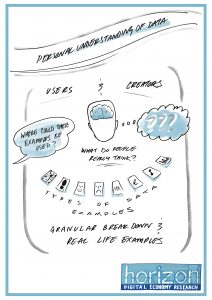
Our cross cutting theme investigating the ways in which people commonly understand the use of personal data in products and services mediated by algorithms is looking for participants to take part in an online survey.
The questionnaire will help our researchers to understand how users of online services think about different types of data.
Participation is voluntary and at the end of the questionnaire, you will have a chance to enter a draw for a £50 shopping voucher.
Access more information about the online survey and a link to the questionnaire here.
Memory Machine Workshop 3
21st September 2018
Identity and wellbeing
We had a diverse group join us for our third workshop which started with a short walk outside, down to the Raleigh commemoration sculpture:
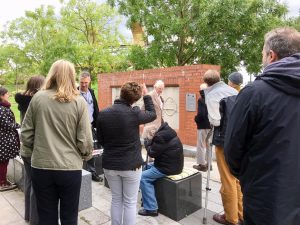
Landscapes prompt memories, as does the weather – as we found when it started raining! So we rapidly retreated indoors. We discussed local places and community connections and their importance in building a sense of familiarity and identity. One of our participants talked about walking around Nottingham, looking at old buildings, and that seeing a building or street from a particular angle would evoke a memory – perspective and place is so important in our memories. In Nottingham we are lucky to have archives from local industries; Raleigh bikes (the factory stood on the site of our new campus) and Boots pharmaceuticals and toiletries. Participants mentioned that Nottingham is also famous for less healthy products; such as beer and tobacco.
I gave a brief talk about how place is connected with health in many different ways. As well as working life, our home life and communities hold strong memories. We had three groups discussing their memories of place and community. Memories of Trent bridge leather tannery, and streets of small shops including a tattoo parlour!
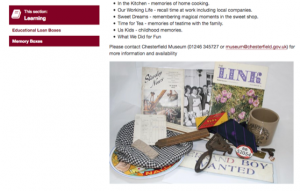
Rachel Jacobs described some interactive and digital experiences that explored issues of wellbeing and place, as well as interesting interactive public displays and interventions. These included:
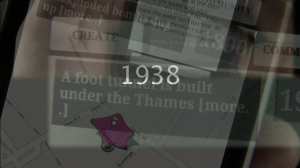
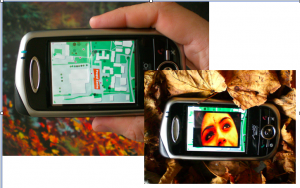
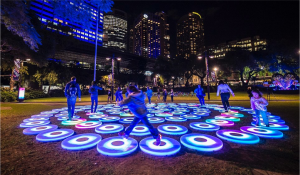
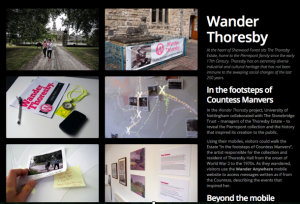
Rachel talked about how the Memory Machine might be able to link into similar forms of interactive experiences either at home or in familiar places, or areas of local interest so that people could both share and access their memories of these places. She spoke about the value of our memories and how the memories and experiences of older generations can enrich the experience of being in places and help us to understand the history, as well as the present and future of the place where we live and work.
Our three groups then considered how a digital ‘memory machine’ might capture some of these memories about place. One group considered an ‘outdoors Alexa’- a kind of ‘listening post’ where people could record, and share, their own recollections of that place – e.g. a street or a park. This idea grew legs! We discussed how people could meet at one of these posts, and then walk together, discussing memories, and recording them at the next post. With a mechanism to assign this shared recording to your personal account – when you got home you could listen again.
Listening again, or recording from one place, but playing back inside, prompted discussion of sharing with residents of a care home or others who may not be able to get out and about. We thought about how to encourage individuals and families at early stages of dementia to start recording memories, or making notes. We had health and social care practitioners in the group who shared their experience of caring for people, and how prompts and recordings could be useful.
Another group discussed a similar use of the memory machine in a park such as Gedling Country Park, with a listening area where people can sit and hear about the history of the park and colliery that used to be there and share their own memories, and people who can’t get to the park can also take part in the conversation and share experiences of being in the park and their own memories from home or a care centre. They also talked about how we manage difficult memories as well as joyful ones and how you can create the right experience to help people to access different memories in a positive way. The group also talked about the positives and negatives of technology and the internet and how it is affecting younger generations and changing how they communicate with each other – how it can both bring people together, and make people feel isolated.
During the session I learnt a lot about Nottingham from the older members of the group. How black lead was used in the laceworks, which would cause damage to the brain and memories of the workers. I said how lucky we are that we can just type into a websearch any locality or industry and rapidly find some information, pictures or archives. One group had discussed cigarette cards – the Google of their generation! Recalling previous generations, we discussed how statues and stained glass of churches were a way of representing Biblical people and stories when the text was in inaccessible Latin.
Places and industry can prompt painful memories; we should not ignore difficult memories, but be aware of our reactions to these. Overall, we discussed how familiar places are interlinked with and our sense of identity and wellbeing. Neil suggested that many of the topics could be linked to Five Ways to Wellbeing – an evidence base linking activities to health and wellbeing – Connect, Be Active, Take Notice, Keep Learning and Give.
Raleigh archive: http://www.iworkedatraleigh.com/
John Players archive: https://www.nottingham.ac.uk/connectedcommunities/projects/john-player-archive.aspx
Written by Neil Chadborn
Researchers at Nottingham University would like to invite you to the third Memory Machine workshop, as part of a series of workshops (4 in total) that explore how new technologies can help us preserve memories that are important for us.
Led by artist Rachel Jacobs and Research Fellow Neil Chadborn, this workshop will be interactive and creative and we welcome older adults, those caring for people with early onset dementia, historians and tech developers
Participants will receive a £10 and travel expenses to the venue covered and it includes lunch and refreshments. The workshop will take place at the Institute of Mental Health.
Everyone welcome. The venue is wheelchair accessible. Please email Rachel Jacobs to discuss any access requirements.
In order to reflect on impacts for wider human values and embed safeguards into technologies being introduced by Services Campaign projects, Peter and Lachlan have been holding workshops with members of Memory Machine, In My Seat and Panopticon. These workshops used the Moral-IT and Legal –IT cards developed as part of the Towards Moral-IT and Legal-IT research ongoing at Horizon Digital Economy Research.
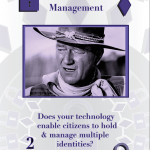
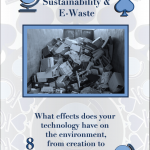
As mentioned in the previous blog, the Legal-IT cards translate a range of data related legal frameworks into card form, from the new EU General Data Protection Regulation 2016 and Network and Information Security Regulation 2016, to the earlier Cybercrime Convention 2001. The Moral-IT cards pose difficult ethical questions clustered under the themes of privacy, security, law and ethics, such as “IDENTITIES MANAGEMENT: does your technology enable users to hold and manage multiple identities?” or “SUSTAINABILITY AND eWASTE – What effects does your technology have on the environment from creation to destruction?”. These thought provoking questions help participants to think of unexpected implications of their technology.
During a workshop, participants were asked to reflect on the technology they were building and identify an overall ‘ethical risk’ that may impact the social desirability of the technology and for its users, particularly in relation to its use of personal data. This could include the identity risks from sensitive data being compromised by poor data security practices, or personal privacy harms for individuals’ private details being made visible to unexpected parties. The groups used the Moral – IT and Legal-IT cards in a streamlined ethical impact assessment process to reflect on the overall risk, discuss and identify potential safeguards against these risks and also identify challenges of implementation of these safeguards. This activity resulted in a wide range of critical ethical questions being explored in relation to the technology with the cards and structure of the task enabling the participants to navigate the difficult ethical questions and link their technology to ethical and legal concerns more widely.
The cards were also used as part of workshop run by Lachlan and Martin Flintham, as part of their Digital Research funded project, to generate thought and encourage discussion about ethical implications of using the ‘Internet of Things’ in both the university and research environment.
We were pleased with how the participants took to the cards. They enjoyed using them and found them helpful in exploring and engaging with the ethical and legal issues in relation to their technology. They were received well, with their utility in structuring debate around complex topics. However, they also brought the wide range of issues to the fore. We are therefore encouraged that the cards have the potential to be a particularly useful tool in enabling technology developers and users to reflect on and navigate the complex ethics of their technology and produce more socially desirable technology as a result.
If you would like to know more, the Moral-IT and Legal-IT cards, and an outline of a way to use them, are now available to download online from ‘Experience Horizon’– a website which provides opportunities to try out some of the outputs from projects conducted at Horizon Digital Economy Research. If you do choose to investigate them further, we would really like to build up dialogue on who you are, how you are using the cards, why and any feedback you have on the tool/process. Please send these on to lachlan.urquhart@gmail.com.
Members of the Privacy, Law and Ethics Cross Cutting Theme are planning analysis and preparing a paper to submit to the Journal of Responsible Innovation, towards the end of the year.
Finally, following a presentation of the project, the Privacy, Law and Ethics Cross Cutting Theme project has been neatly summed up in a visual form as can be seen below – our thanks and acknowledgment to Rikki Marr of HAWK&MOUSE.
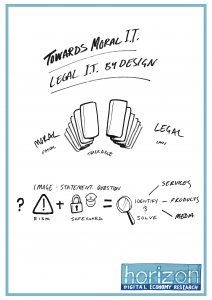
Written by: Lachlan Urquhart and Peter Craigon
For the entirety of my adult life, I’ve been studying culture, based on the conviction that media products (however ‘mindless’ and ‘disposable’ many claim them to be) play an incredibly valuable role in all our lives. This is because they are bound up inextricably in our wider experiences of the world, of other people, and in our emotional reality.
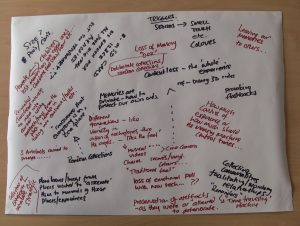
It’s easy to identify moments from my own life that illustrate this point. Anaesthetising my teenage anxiety, while I waited to hear if I’d got my University place, by concentrating instead on the characters in a favourite book, Annie Proulx’s The Shipping News. Escaping to Middle Earth after my PhD examination by watching the Lord of the Rings Trilogy (extended editions) back-to-back. Euphorically dancing around the flat with my newborn daughter to Paolo Nutini’s Pencil Full of Lead singing “best of all, I got my baby”.
These formative experiences that stick in my memory are linked to and enriched by the media I consumed in those moments. And perhaps the stickiness of those memories is reinforced every time I encounter that content again. Certainly particular pieces of media trigger particular memories, and that nostalgia can be quite visceral. For example, Beyoncé’s Crazy in Love reimmerses me in another swelteringly hot summer – 2003 – when that hit single seemed to be continuously blasting through the open windows of every vehicle in London.
Lots of amazing, imaginative work is being done to take advantage of the propensity of media to ‘transport us’ in time and space, especially when memories and/or media become harder to access. The WAYBACK is a virtual reality film, funded by £35,000 pledged to a Kickstarter campaign, that recreates Coronation Day 1953 to help those living with Alzheimer’s and their carers recall the conversations, music and atmosphere of a street party. In situations when people’s cultural worlds become restricted, digital apps can also help maintain access to content and all its benefits. Armchair Gallery is developing an app to enable digital access to, and creative interaction with, artworks in collections for those who cannot physically visit them.
What excites me about the Memory Machine idea is imagining an in-home media repository cum player that could automatically connect personally important content (e.g. a pop song) with a period of time (e.g. when you added it to your music collection or listened to it a lot) and with other contemporaneous media (e.g. a film or advert of the time that featured the song). This has the potential to generate multi-layered, multimedia connections between individual and historical context. More than that, a system that could link one person’s cultural experiences with those of people around them would also transcend the artificial limitations we all apply to media on the basis of personal taste. I think it would be wonderful if my daughter could one day, as an adult, get a sense of the love and joy she brings me by being played a pop song from ‘before her time’.
Written by Dr Sarah Martindale
